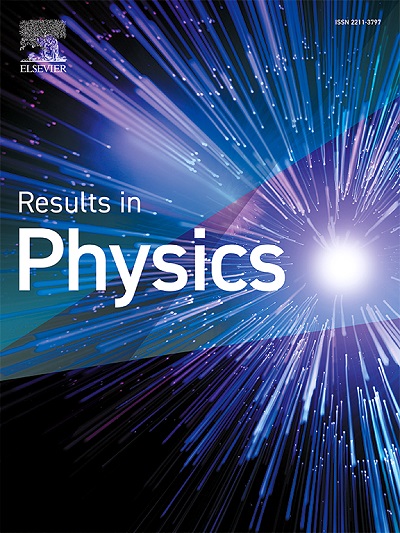类噪声脉冲产生的超连续光谱研究的数值分析
IF 4.4
2区 物理与天体物理
Q2 MATERIALS SCIENCE, MULTIDISCIPLINARY
引用次数: 0
摘要
对类噪声脉冲(nlp)产生的多个超连续谱(SC)进行了数值分析,以评估其在气体探测中的可行性。本研究采用的数值设置是采用锁模配置的8字形光纤激光器。这种结构包括一个非线性光环路镜,作为一个振幅滤波器,和一个双包层铒镱光纤,作为有源元件。对从HITRAN数据库中获得的气体C2H2在近红外区域的吸收光谱进行了分析。分析显示,根据极化操作产生的NLP类型,敏感性方面的结果不同。一些光谱保留了大部分气体的振动谱线和频率成分,有利于气体的正确识别。对CH4也进行了模拟,显示出可见的吸收光谱,从而证实这些由nlp供电的源可以高度选择性地检测各种气体。本文章由计算机程序翻译,如有差异,请以英文原文为准。
Numerical analysis of spectroscopic studies using supercontinuum generated by noise-like pulses
Multiple Supercontinuum (SC) spectra generated by noise-like pulses (NLPs) were subjected to numerical analysis to assess their viability for gas detection. The numerical setup employed for this study was a figure-eight fiber laser using a mode-locking configuration. This configuration included a nonlinear optical loop mirror, which functions as an amplitude filter, and a double-clad erbium-ytterbium fiber, which serves as the active element. The absorption spectrum of the gas C2H2 in the near-infrared region, obtained from the HITRAN database, was analyzed for the proposed numerical setup. The analysis revealed distinct outcomes in terms of sensitivity, depending on the type of NLP generated through polarization manipulation. Some spectra maintained most of the gas rovibrational lines and frequency components, thus facilitating the proper gas identification. Simulations were also performed for CH4, showing a visible absorption spectrum, thereby substantiating that these sources powered by NLPs can detect various gases with a high degree of selectivity.
求助全文
通过发布文献求助,成功后即可免费获取论文全文。
去求助
来源期刊

Results in Physics
MATERIALS SCIENCE, MULTIDISCIPLINARYPHYSIC-PHYSICS, MULTIDISCIPLINARY
CiteScore
8.70
自引率
9.40%
发文量
754
审稿时长
50 days
期刊介绍:
Results in Physics is an open access journal offering authors the opportunity to publish in all fundamental and interdisciplinary areas of physics, materials science, and applied physics. Papers of a theoretical, computational, and experimental nature are all welcome. Results in Physics accepts papers that are scientifically sound, technically correct and provide valuable new knowledge to the physics community. Topics such as three-dimensional flow and magnetohydrodynamics are not within the scope of Results in Physics.
Results in Physics welcomes three types of papers:
1. Full research papers
2. Microarticles: very short papers, no longer than two pages. They may consist of a single, but well-described piece of information, such as:
- Data and/or a plot plus a description
- Description of a new method or instrumentation
- Negative results
- Concept or design study
3. Letters to the Editor: Letters discussing a recent article published in Results in Physics are welcome. These are objective, constructive, or educational critiques of papers published in Results in Physics. Accepted letters will be sent to the author of the original paper for a response. Each letter and response is published together. Letters should be received within 8 weeks of the article''s publication. They should not exceed 750 words of text and 10 references.
 求助内容:
求助内容: 应助结果提醒方式:
应助结果提醒方式:


